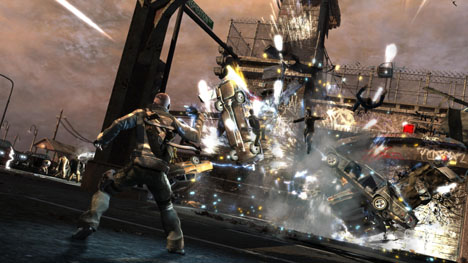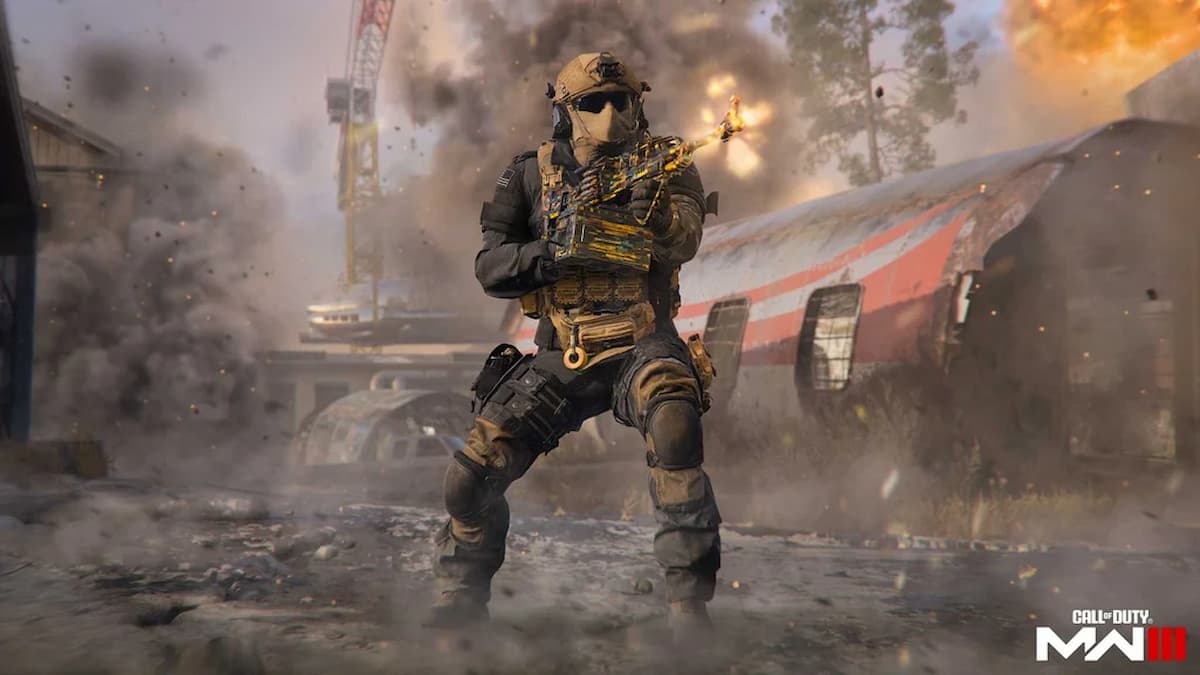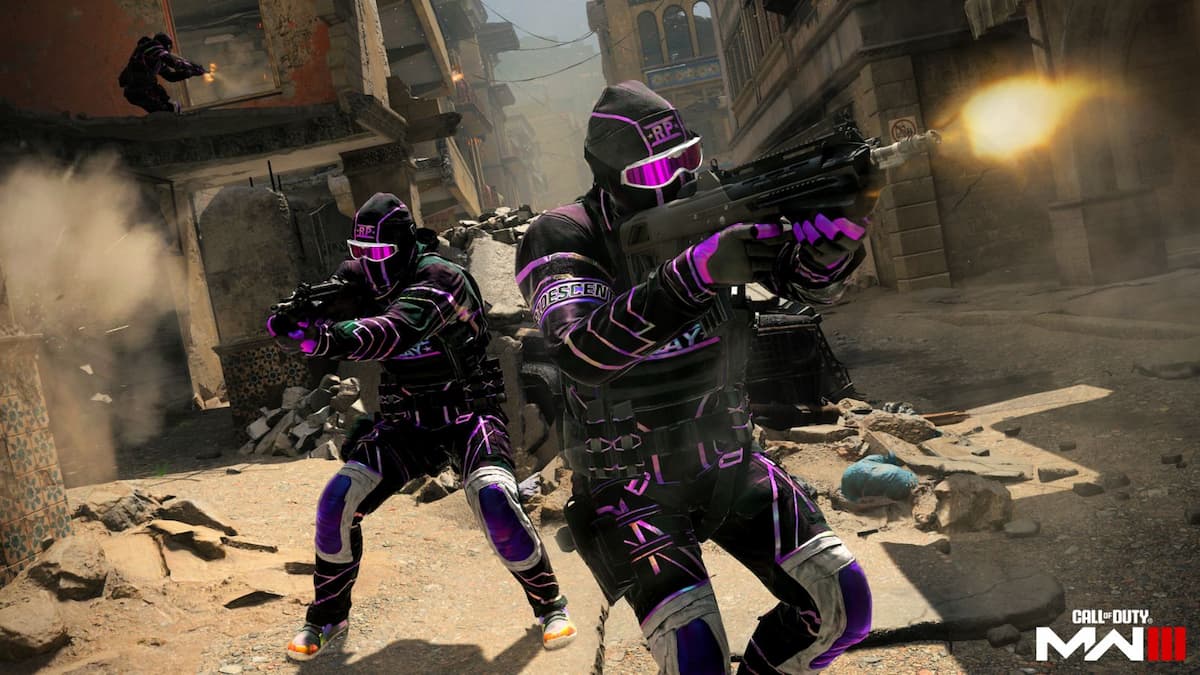This morning we got to see a pretty kickass presentation of the third-person, open-ended superhero PS3 game inFamous. We had the pleasure of seeing it in action, watching gameplay as the newly powered-up former messenger boy Cole scaled walls, flung cars across city blocks, and electrocuted the hell out of everything in sight.
After this presentation, we had a chance to chat with Sucker Punch’s Brian Fleming for a bit on what we can expect from the upcoming title. We covered game design, console choices, streaming games off the hard disk and much more in this interview. Oh, and we got geeky with superhero powers. This guy seems to know his sh*t.
Destructoid: We saw the presentation where you showed inFamous today — it looks pretty badass.
BF: Yeah, we’re getting there. It will look better by the time we ship. We didn’t think we fucked up today.
No, no. Definitely not. No fucking up here.
I was pretty fucking nervous beforehand, though.
We were talking after the presentation. Here’s two different types of games for two different types of gamers. Fallout 2 looks better than ever, but inFamous is more of my jam.
You’re right that they’re very different games. [inFamous] comes from a very different place, and… it has a very different budget. [laughs]
Here’s what I like: the superhero theme at its core.
That’s what the dream was. If you took the DNA — the key bits of the superhero genre, certain kinds of conflicts, struggles, characters — and you made up a new one, that’s a certain kind of crazy.
You’re in a space, the superhero genre, where you’re competing with Superman, Batman, Spider-Man, The Hulk, all these properties that my mom fucking knows. We’re trying to invent a new one — that’s a certain kind of crazy. But the reason for doing this — the reason to make the game — is because we love those properties, but they all kind of grew up as linear media. What would it be like if you tried to grow one of these as a videogame?
The whole experience: the discovery of your powers, the relationship with the city, a city turning against you (which happens in every one of them), how you get framed for helping the city — those are all the feelings we love, and we wanted to try to give you a first-person experience of what would that feel like if that happened to me?

I’m glad it’s third-person gameplay. That seems to fit what you’re trying to do better. You’re seeing yourself in this world, and you’re seeing all of this shit going down around you.
We knew we were going to do a third-person game. That’s our expertise. Look, we’ve stretched a lot of boundaries by doing this game. We moved from cartoon to realism, we went from… well, we did Sly Cooper. That’s super-stylized cartoon, all the way to realism now. We’ve gone from kind of level-based to a big open-world streaming game. We’ve gone from PlayStation 2, with relatively simplified graphics, to PlayStation 3 with, at least in the open-world space, remarkable levels of detail and interactivity. It’s been a massive change for us on enough fronts. Third-person games are what we believe in, and every game we’ve ever made has been a third-person action; we’re staying put.
You mentioned the jump from PS2 to PS3…
Sony’s our publisher. We’ve had a really productive relationship with them. They’ve been a great coach for us, and we value that. You won’t get any backscatter talk. It seems like it’s popular for teams to bag on their publisher. We have nothing but respect for that team. You notice there are good teams here. Certainly we hope to include ourselves, but you’ve got Naughty Dog, Insomniac — these teams could go do work. They could get gigs. And they’ve chosen to tie themselves to Sony. The reason is that they’re actually good at what they do. They’re very good at giving you enough rope, but not too much.
Some people don’t think about that aspect. You always hear talk about hardware preferences, but you never get that other side of game makers talking about the support teams behind things.
But we love the hardware. That’s not the reason we chose it.
Because you’re on the PS3, and seeing the open-world nature of inFamous, do you think there will be an install process and streaming data?
I’ll give you a minute of philosophy, and then I’ll answer the question.
We think that the first fifteen to twenty minutes of whatever happens after you push in the game is the most important fifteen minutes of the entire experience. It is where people will transition from the world that they have into your universe. And you have this chance to get them and move them into your space, and capture their attention. And if you fuck that up, whatever you did in that last boss battle just doesn’t matter. We cherish the first few seconds of the game, and if you look at all of our games — you look at Sly running on the rooftops — you push start, and it starts. There is no cutscene. There might be a little chitchat, but you’re playing the game. This is going to be the same way.
Now, the game is a big open-environment streaming game, and we have to figure out how and when we can afford to get this content onto the disk. It is our battle to decide how to balance that.

So that’s something you’re still working on then, right?
Well, we’re trying how and where to put it exactly, so it’s a very difficult decision for us. It’s painful to us as players that the first thing you would have to do is wait for a dialog. Certainly, if we succumb to there’s going to be a dialog, then we will do what we can to make… well, that 15-minute install is an absolute non-starter for us.
Right now, I can tell you that the game… today, if you took the build that we ran earlier, it would take 4 minutes to get the game fully cached. Now, it’s not going to get worse. So the question is how much better can I make it? I think we can make it a lot better, but we’ll find out.
Would you call this disk streaming a necessity at this point? Because of the nature of the game, is this something you’re going to have to do?
One of the big advantages of the PS3 is the guaranteed hard drive. When you’re streaming as much content as we’re streaming, it’s a massive win for the development team to have a hard drive. The optical disc access is fairly high-bandwidth, but there’s latency because the disc seeks are so long. Hard drives are higher bandwidth and way lower latency, so it’s a way preferred model for how to get the content load. Much, much better from our standpoint.
From what I’ve seen, it seems like you can just run forever…
It’s an open-ended game — it’s the real deal. At the beginning of the game, there are some obstacles that you have to overcome before you can get to everywhere. You’re not going to be able to run to everywhere right… [pauses] I almost said something I would have been killed for. [laughs]
You’re not going to be able to access all of the content right from the initial moment, but there’s plenty of content to explore, with cool reveals along the way.

So Cole’s power, electricity — was that just a creative choice? Or is there a story reason why he’s throwing electricity?
It’s a little of both. It was a question of, How do we make choices that make this a good interactive title? Instead of, oh, we’re shackled with X-ray vision and can blow frost and bullets can hit his eye. It’s pretty hard to make to make a Superman game if you ask me. I wouldn’t know how to make that game. Really smart people have tried hard.
Our goal was, How do we define a power set? First of all, at some level, unlimited power isn’t the best superpower. It’s very important that powers have strengths and weaknesses. Weaknesses need to be built into the game and character. And a weakness in our game could be as simple as a chain-link fence, because if you’re on the other side of a chain-link fence, and you have a gun, you could fuck me up and I can’t do anything to you. I can’t shoot you, so that’s a real problem for Cole. So that’s essential that you have these kinds of strengths that have weaknesses.
There’s kind of an emotional contract that you have with superheroes… look, I’m willing to suspend belief that a radioactive spider could bite you and give you spider-like powers. But, if suddenly you could turn invisible and fly and do all these crazy things — people are willing to take one or two steps into a fantasy world, but if you ask them to take a hundred, then you lose them.
There’s also an important part of this: people have to relate. They have to be able to get into their head that there’s this some kind of yet-to-be-explained accident that happened, and somehow this guy can how completely conduct electricity. But he can’t also walk on water — that’s it, that’s your limitation, and you have to stay in that universe. It’s got to hold together or things start to fall apart. So for us, part of it is what’s fun, and part of it is staying true to conventions and the archetypes of the genre we’re in.
Are there specific comics that were direct inspirations for inFamous?
At its core, it’s more general. We’ll sit around and talk about what kind of situations do we think are iconic for this genre. By being iconic, it means it’s not just that we took this from The Punisher. It’s more that this is the theme that is in the center of this genre. So we’re really more interested in that. And then there are specific things that inspire you, like anyone, really.
Certainly there are some comic works. We always talk about DMZ as a great example. There are plenty of others. It’s not like we’re trying to make DMZ, but it’s very inspiring to us. The kind of grounded-ness of that universe. We’re not as passionate about the big buckles and underwear on the outside kind of guys.
We were pleasantly surprised by the success of the TV show Heroes, which came out about a year into the development of the project. They’re really channeling this everyday people superpowers vibe. You see it be successful and you’re like, wow. Good reinforcement. There’s a frequency there that connects with people.

Back to the powers, I imagine your team sitting in the room and someone calling out “shocking things is badass. Let’s do that.”
Certainly. It’s visually very badass. Because, that’s important. This is a visual medium. Electricity, on the grand checklist — we could make that look fucking awesome! [laughter]
You showed that electricity is being drawn from one thing, and then you take it and use it. Is it always limited?
You have a certain amount of what I’d call bio-electricity. You could shoot some basic lighting bolts out of your hand. It’s pretty much self-generated. But there are heavier powers, and those consume charge out of your body. You lose it, and you need to go replenish that charge.
There’s a meter that seems to run out…
It’s really kind of cool that there’s a profoundly different feel when you leave areas, when you get to dark areas. It’s kind of cool how it connects lyrically with the city. When the game changes as profoundly as when you don’t have power anymore, and you’re kind of mortal, it’s this really awesome reinforcement of what you’re trying to say artistically. The power is out in this area, and by the way, you’re very vunerable.




